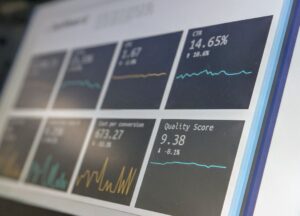## Is the Fed’s Cash Spigot Drying Up? Two Key Ratios Hint at Tighter Times Ahead
Remember the flood of cash the Federal Reserve pumped into the economy during the pandemic? Well, the tide might be turning. Two key indicators are flashing warning signs that the era of easy money could be coming to an end, and that has implications for everything from stock prices to the cost of your student loans.
For the past few years, the Fed has been injecting liquidity into the financial system, making it cheaper for businesses to borrow and for consumers to spend. This helped prop up the economy during uncertain times. However, this generosity also contributed to inflation, pushing prices higher on everything from groceries to gas. Now, the Fed is trying to walk a tightrope: combat inflation without sending the economy into a tailspin.
Two key metrics suggest they’re tightening the reins. First, the “reverse repo” rate, essentially the interest banks earn for parking their cash overnight at the Fed, has been climbing. A higher reverse repo rate incentivizes banks to hold onto cash rather than lending it out, effectively shrinking the available money supply. Think of it like this: if your bank offers you a really good interest rate on your savings account, you’re less likely to spend that money. The same principle applies here.
The second indicator is the decline in the Fed’s balance sheet. This represents the total assets held by the central bank, including things like Treasury bonds and mortgage-backed securities. When the Fed was pumping money into the economy, its balance sheet ballooned. Now, it’s actively shrinking it by letting some of these assets mature without replacing them. This, again, reduces the amount of money circulating in the system.
So, what does this mean for you? Potentially higher borrowing costs. As the money supply tightens, interest rates are likely to rise, making it more expensive to finance a car, a house, or even that new laptop you’ve been eyeing. It could also impact the stock market, as companies face higher borrowing costs and potentially slower growth.
While these indicators point towards a tightening of liquidity, it’s important to remember that the economy is complex and constantly evolving. The Fed is constantly monitoring the situation and adjusting its policies as needed. Keeping an eye on these key ratios can provide valuable insights into the direction of monetary policy and its potential impact on your financial future. Staying informed is the first step to navigating these potentially changing financial tides.





